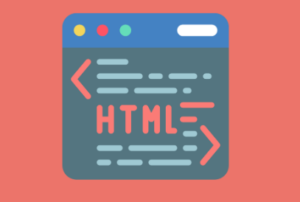In today’s digital age, web development has become an essential skill. Whether you’re a budding programmer or a seasoned developer, HTML (Hypertext Markup Language) is the foundational language that you must master. In this article, we will embark on a journey to explore the world of web development through HTML. From the basics to more advanced techniques, this comprehensive guide will equip you with the knowledge and skills to create stunning web pages and applications.
Understanding HTML: The Building Blocks of the Web
To begin with, HTML, or Hypertext Markup Language, is the backbone of the World Wide Web. Hence, it is a markup language that defines the structure of web pages using elements and tags. Understanding its fundamental structure is the first step towards becoming a proficient web developer.
The Basic Elements: Start Simple
Moreover, HTML documents consist of several elements. These elements include headings, paragraphs, lists, links, and images. Thus, using these elements, you can create a simple webpage. Let’s delve into some basic HTML tags:
<html>: The root element of an HTML page.<head>: Contains meta-information about the document.<title>: Sets the title of the webpage displayed in the browser.<body>: Houses the main content of the page.

Structuring Content: Headings and Paragraphs
Headings are used to define the hierarchy of your content. They range from <h1> (the most significant) to <h6> (the least significant). Paragraphs, on the other hand, are created using the <p> tag. These elements give structure to your content, making it more readable and organized.
Adding Links: Navigating the Web
The <a> element is used to create hyperlinks. It allows you to link to other web pages or resources. You specify the destination using the href attribute. Here’s an example of a simple link:
<a href="https://www.example.com">Visit Example Website</a>Including Images: Enhancing Visual Appeal
Images make web pages visually appealing. To include an image, you use the <img> element. The src attribute specifies the image file’s source, and the alt attribute provides alternative text for accessibility and SEO.
<img src="image.jpg" alt="A beautiful landscape">Advanced Techniques: CSS and JavaScript
Furthermore, once you’ve grasped the basics, it’s time to explore more advanced techniques. Cascading Style Sheets (CSS) and JavaScript are essential tools for enhancing the functionality and appearance of your web pages.
CSS: Styling Your Webpage
In addition, CSS allows you to control the layout and design of your web page. Moreover, you can apply styles like colors, fonts, margins, and more to your HTML elements. CSS rules are defined in a separate file or embedded within the HTML document.
JavaScript: Adding Interactivity
JavaScript is a powerful scripting language that enables you to add interactivity to your web pages. You can create dynamic content, handle user input, and interact with web services. Integrating JavaScript with HTML opens up a world of possibilities for your web development projects.
Responsive Design: Adapting to All Devices
To add on, in the modern web development landscape, it’s crucial to ensure that your web pages are responsive, meaning they adapt to various screen sizes and devices. This is achieved using techniques like media queries and flexible layout systems.
Testing and Debugging: Ensuring Quality
Lastly, before you launch your website, thorough testing and debugging are essential. Hence, tools like browser developer consoles and validators can help you identify and fix issues in your HTML, CSS, and JavaScript code.
Conclusion
In conclusion, HTML is the gateway to the world of web development. It provides the foundation upon which you can build interactive and visually appealing web pages. Whether you’re creating a personal blog or a professional website, mastering HTML is a vital step on your web development journey. As you explore more advanced techniques and tools, you’ll have the power to create immersive, dynamic, and responsive web experiences that captivate your audience.
In the ever-evolving digital landscape, HTML remains a steadfast and essential language for web developers. Dive into the world of web development, unlock your creativity, and unleash the potential of HTML to craft the digital future.

